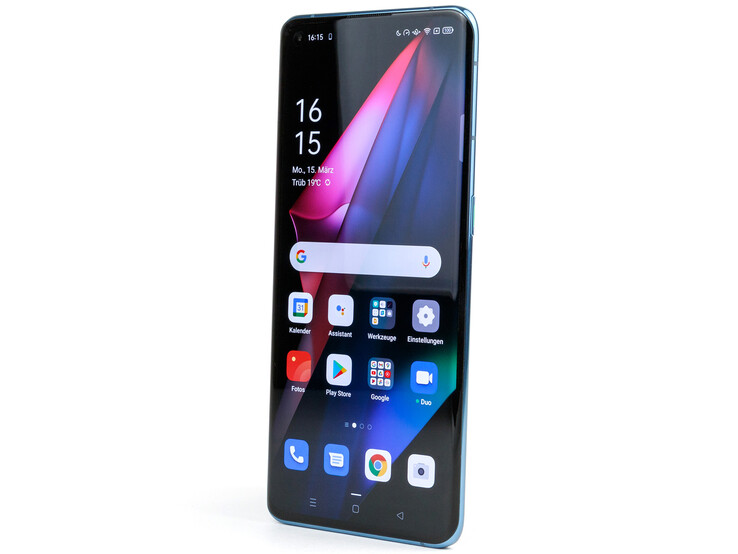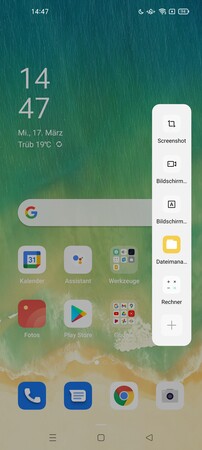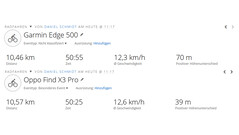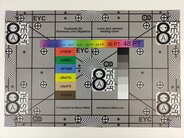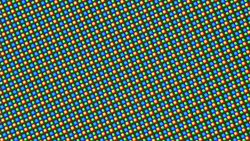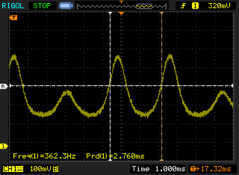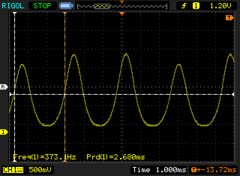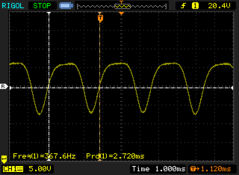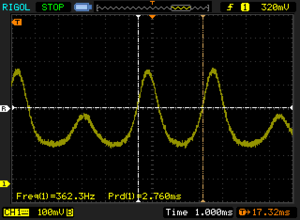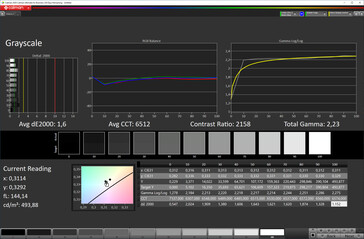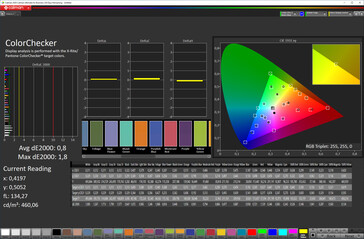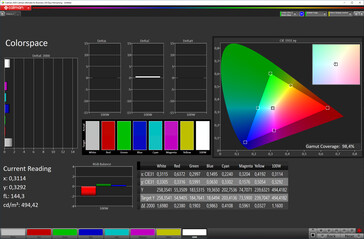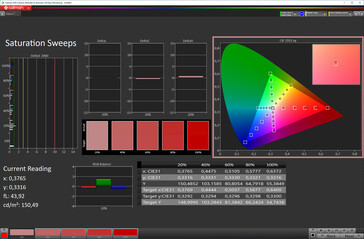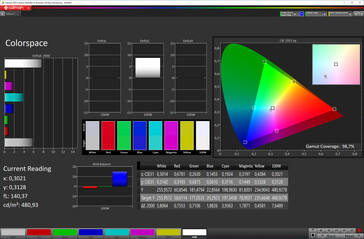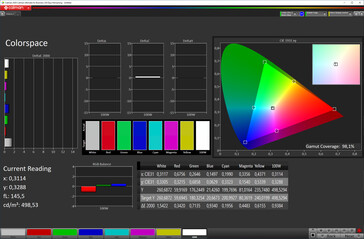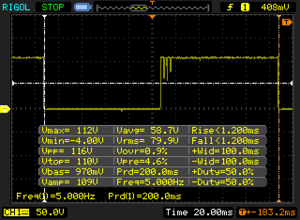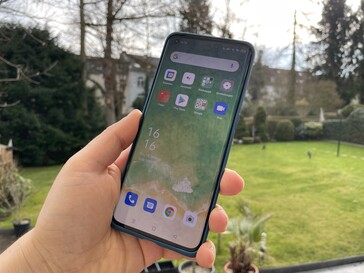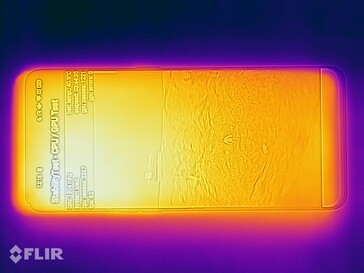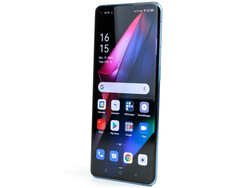Oppo Find X3 Pro review: The smartphone with the microscope camera
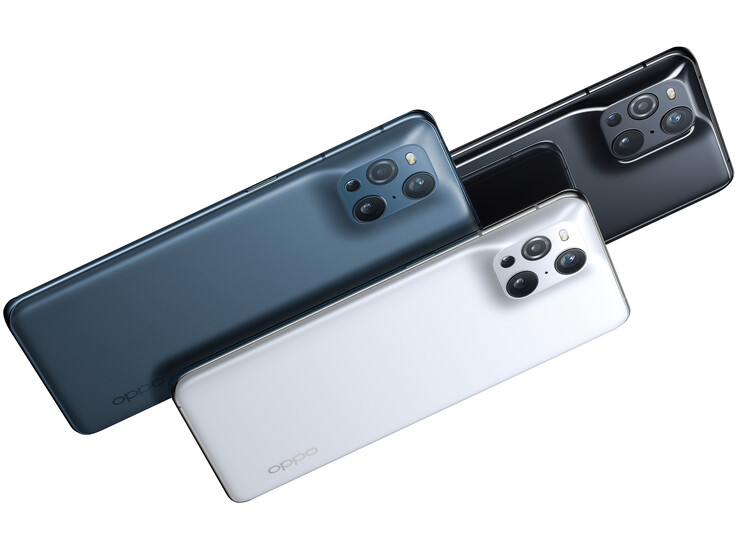
The Oppo Find X3 Pro is the successor to the Find X2 Pro and features a lot of fine-tuning in terms of specifications. For instance, the smartphone now sports a newer SoC and more modern storage. RAM remains unchanged at 12 GB, but only the 256 GB storage variant is offered in this country - last year it was 512 GB. However, we can't rule out the possibility of more models coming to Europe.
Oppo places a special focus on the camera, which uses an exclusive sensor from Sony for the first time, but this is time-limited. The Chinese have installed it twice and also have an optical zoom on board, but they don't rely on extraordinarily long focal lengths but go more in-depth instead with a microscope camera.
Oppo shows its confidence when it comes to the price and charges 1,149 Euros (~$1,373) for its flagship smartphone.
Possible contenders in comparison
Rating | Date | Model | Weight | Drive | Size | Resolution | Price |
|---|---|---|---|---|---|---|---|
| 88.9 % v7 (old) | 03 / 2021 | Oppo Find X3 Pro SD 888 5G, Adreno 660 | 193 g | 256 GB UFS 3.1 Flash | 6.70" | 3216x1440 | |
| 90.4 % v7 (old) | 02 / 2021 | Samsung Galaxy S21 Ultra Exynos 2100 5G, Mali-G78 MP14 | 227 g | 128 GB UFS 3.1 Flash | 6.80" | 3200x1440 | |
| 88.3 % v7 (old) | 12 / 2020 | Xiaomi Mi 10 Ultra SD 865, Adreno 650 | 223 g | 128 GB UFS 3.1 Flash | 6.67" | 2340x1080 | |
| 88.7 % v7 (old) | 12 / 2020 | Apple iPhone 12 Pro Max A14, A14 Bionic GPU | 228 g | 128 GB NVMe | 6.70" | 2778x1284 | |
| 86.1 % v7 (old) | 03 / 2020 | Oppo Find X2 Pro SD 865, Adreno 650 | 202 g | 512 GB UFS 3.0 Flash | 6.70" | 3168x1440 |
Case - Find X3 Pro with unique camera design
Contrary to the current trend, the Oppo Find X3 Pro has become even a bit lighter, although the battery has grown in capacity; this makes it one of the lightest smartphones with such a large display. The latter is protected by Corning Gorilla Glass 5, while ceramic glass is used on the back, which has a curved camera hump. Not only does this look much more elegant, but it also avoids crevices and edges where dust can collect. Nevertheless, the Oppo smartphone lies quite wobbly on a table.
The gap dimensions of the Find X3 Pro are tight and even. The smartphone reacts reluctantly when we try to twist it, but it creaks lightly. The aluminum frame has a high-gloss finish, but it's not particularly susceptible to fingerprints. The SIM card slot protrudes slightly and can accommodate two nano SIM cards.
The battery is permanently installed and can't be replaced by the user. Like the predecessor, the Find X3 Pro is also protected against dust and water ingress according to the IP68 standard. It's available in black, white, and blue.
Connectivity - Oppo phone with USB 3.2 and HDMI
The Oppo Find X3 Pro has one USB 3.2 port (Gen. 1), which is used to charge the smartphone and exchange data with a computer. In addition, wired image output via HDMI or DisplayPort is also possible using an optional adapter. OTG is also supported, so that external storage media or peripherals can be connected. However, this has to be enabled first, and it deactivates automatically when the function hasn't been used for 10 minutes. This is a bit annoying for users who want to output audio via USB-C, for example.
Otherwise, the configuration is pretty complete and up to date. Besides Bluetooth 5.2, NFC, and Wi-Fi 6E, 5G is available as well. An audio jack, radio receiver, IR blaster, microSD support, and a notification LED aren't available. The latter is replaced by an always-on display and edge lighting.
Software - Strict power saving under Android 11
The Oppo Find X3 Pro comes with Google Android 11 and the in-house UI ColorOS 11.2. Besides numerous Google apps, only a few third-party apps are preinstalled, which only include Facebook and Netflix, but the latter can only be disabled and not uninstalled.
Oppo promises two years of updates for its flagship smartphone, which includes two major updates and monthly security updates.
The user interface looks quite tidy and is somewhat reminiscent of Xiaomi's MiUI, but it does without ads and relies on a few additional apps for phone management and game control. Unfortunately, there's no integrated solution to safeguard the user's data locally. The strict energy management is more annoying, because apps that run in the background, which also includes various fitness trackers, are rigorously shut down by the system unless this is allowed in the respective app's energy management settings beforehand.
Communication and GNSS - Find X3 Pro hardly leaves anything to be desired
The Oppo Find X3 Pro offers a broad spectrum of mobile frequencies and supports all modern standards. Only mmWave is not supported for 5G. The smartphone's reception didn't show any problems in the test.
The Wi-Fi module supports Wi-Fi 6E and VHT160 with MIMO antenna technology. Even though our reference router, the Netgear Nighthwk AX12, doesn't support the latest standard, we can already see much faster performance in Wi-Fi 6 networks than with last year's models - at least for sending data. Furthermore, the Find X3 Pro's data transmission is very stable, and the range is also convincing in the test.
The Oppo Find X3 Pro relies on numerous navigation networks for positioning and also supports dual-band or even triple-band positioning. The satellite fix takes a moment to be available indoors, but the smartphone's position is determined quite accurately after that.
The Oppo smartphone didn't show flawless route tracking during our short test drive, but it's much more accurate than the Garmin Edge 500 bike computer, which is particularly evident in the area of the turning point.
Telephone and call quality
We liked the Oppo Find X3 Pro's voice quality in the test. When held to the ear, intelligibility is very good in both directions. Only very loud ambient noise causes slight distortions in the Oppo user's voice, but they're almost completely filtered out. The speaker has a comparatively long range, but the user's voice is picked up in a nasally manner, and reverberations are audible at a slightly longer distance.
The Find X3 Pro has room for two nano SIM cards, and an eSIM can also be used as an alternative. However, this only worked when setting up the smartphone at the time of our test; the corresponding menu item is still missing in the settings. Oppo plans to fix this soon via an update, though. Furthermore, VoLTE and Wi-Fi calling are supported.
Cameras - Good quad-camera setup in the Oppo smartphone
The front-facing camera of the Oppo Find X3 Pro has a resolution of 32 MP, but it doesn't use pixel-binning, so that quite large selfies can be taken. The picture quality is decent, and in addition to AR stickers, it also offers a variety of settings to optimize the user's appearance.
The real highlight is the quad-camera setup on the back, which is equipped with two main sensors. These are available for wide-angle and ultra wide-angle shots, but only the former can make use of optical image stabilization. The latter can convince with good imaging performance in daylight, but it does a lot of sharpening; but it doesn't overdo it as much when it comes to depth, so that the depth of field looks more homogeneous than with Samsung, for example. In return, the subjects look more saturated.
The telephoto lens offers a 2x optical magnification and a 5x hybrid zoom. As expected, the P40 Pro has the lead in comparison due to its periscope zoom. However, Oppo doesn't need to shy away from being compared with the Galaxy S21 Ultra, but it's less powerful since it only offers a maximum digital magnification of 20x.
In return, the Find X3 Pro delivers exceptional close-ups with its microscope camera. Although the lens can only use ambient light, magnifications are captured amazingly clearly. For this, however, the respective subject has to be as flat as possible, because this will result in blurry areas very quickly otherwise. Overall, however, we were surprised by how well the lens works.
A further highlight that Oppo advertises is the 10-bit rendering of photos, which enables broader color reproduction and smoother color transitions as a result. But this has to be enabled in the settings first, because the HEIF format has to be used to take photos with a 10-bit color depth.
Videos can be recorded in Ultra HD at up to 60 frames per second at best, but it's only possible to switch between the different lenses to a limited extent, and even Expert mode doesn't change anything in this regard. Furthermore, videos can also be created with the main and front-facing cameras simultaneously. The latter only supports 1080p.
Microscope photos
Image comparison
Choose a scene and navigate within the first image. One click changes the position on touchscreens. One click on the zoomed-in image opens the original in a new window. The first image shows the scaled photograph of the test device.
Wide angleWide angleUltra wide angle5x zoomLow light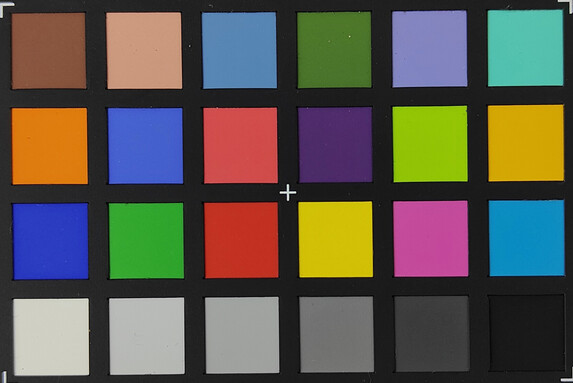

Accessories and warranty - VOOC charger included
What were standard accessories last year are already considered a generous inclusion in 2021; in this way, the Oppo Find X3 Pro comes with a 65-watt modular power adapter, a USB cable (Type-A to Type-C), a USB headset, a silicon case, and a SIM tool.
There is a 24-month warranty, and it can't be extended.
Input devices and handling - Find X3 Pro without innovations
Like the predecessor, the Oppo Find X3 Pro relies on an optical fingerprint scanner under the display for biometric security. It reliably unlocks the smartphone and takes the user directly to the home screen or the last opened app. Alternatively, 2D facial recognition is available, which is less secure. However, it can also be specified in its settings whether face unlocking with closed eyes is allowed to happen and whether the lock screen should be shown after the unlocking process.
The capacitive touchscreen operates with a sampling rate of up to 240 Hz and responds quickly and reliably to inputs. Google's GBoard is preinstalled as keyboard app, but it can also be replaced with another variant from the Play Store. The physical buttons have a short, crisp travel with a clear pressure point.
Display - LTPO will be added via an update
The AMOLED display of the Oppo Find X3 Pro supports a dynamic refresh rate of up to 120 Hz, HDR10+, and a 1440p resolution. With the ambient light sensor enabled, the maximum brightness and its distribution are very good. When the sensor is deactivated, the maximum brightness is 483 cd/m². We measured 854 cd/m² with an even distribution of bright and dark areas (APL50). The LTPO function is supposed to allow a more flexible adjustment of the refresh rate from 1 to 120 Hz, but it will be added via an update. Oppo was unable to name an exact release date for this.
The Find X3 Pro isn't immune to the typical flickering of OLED displays. Above a brightness level of 16%, however, the amplitude curve is quite flat and the frequency almost uniform. Below that, the latter fluctuates strongly at around 179 to 362 Hz and can lead to complaints in sensitive users. Moreover, a DC-dimming mode is no longer available.
| |||||||||||||||||||||||||
Brightness Distribution: 94 %
Center on Battery: 759 cd/m²
Contrast: ∞:1 (Black: 0 cd/m²)
ΔE ColorChecker Calman: 0.8 | ∀{0.5-29.43 Ø4.82}
ΔE Greyscale Calman: 1.6 | ∀{0.09-98 Ø5.1}
98.4% sRGB (Calman 2D)
Gamma: 2.23
CCT: 6512 K
| Oppo Find X3 Pro AMOLED, 3216x1440, 6.7" | Samsung Galaxy S21 Ultra Dynamic AMOLED 2X, 3200x1440, 6.8" | Xiaomi Mi 10 Ultra OLED, 2340x1080, 6.7" | Apple iPhone 12 Pro Max OLED, 2778x1284, 6.7" | Oppo Find X2 Pro AMOLED, 3168x1440, 6.7" | |
|---|---|---|---|---|---|
| Screen | -36% | 7% | -6% | -179% | |
| Brightness middle | 759 | 910 20% | 779 3% | 855 13% | 778 3% |
| Brightness | 776 | 913 18% | 779 0% | 857 10% | 775 0% |
| Brightness Distribution | 94 | 98 4% | 96 2% | 98 4% | 99 5% |
| Black Level * | |||||
| Colorchecker dE 2000 * | 0.8 | 2 -150% | 0.8 -0% | 1.1 -38% | 4.4 -450% |
| Colorchecker dE 2000 max. * | 1.8 | 3.1 -72% | 1.4 22% | 2.51 -39% | 8.7 -383% |
| Greyscale dE 2000 * | 1.6 | 2.2 -38% | 1.4 12% | 1.4 12% | 5.6 -250% |
| Gamma | 2.23 99% | 2.06 107% | 2.25 98% | 2.187 101% | 2.26 97% |
| CCT | 6512 100% | 6512 100% | 6250 104% | 6337 103% | 7250 90% |
* ... smaller is better
Screen Flickering / PWM (Pulse-Width Modulation)
| Screen flickering / PWM detected | 362.3 Hz | ≤ 16 % brightness setting | |
The display backlight flickers at 362.3 Hz (worst case, e.g., utilizing PWM) Flickering detected at a brightness setting of 16 % and below. There should be no flickering or PWM above this brightness setting. The frequency of 362.3 Hz is relatively high, so most users sensitive to PWM should not notice any flickering. However, there are reports that some users are still sensitive to PWM at 500 Hz and above, so be aware. In comparison: 53 % of all tested devices do not use PWM to dim the display. If PWM was detected, an average of 8316 (minimum: 5 - maximum: 343500) Hz was measured. | |||
The color reproduction of the Find X3 Pro is much improved, and it delivers very good Delta E values in our measurements with CalMAN. However, these are only achieved when the Gentle color profile is selected, which uses the smaller sRGB color space and displays fewer colors as a result. A good alternative is the Cinematic mode, which offers a barely cooler reproduction but covers the larger DCI-P3 color space almost completely. The preset color mode shows a high color temperature with a correspondingly cool reproduction.
Display Response Times
| ↔ Response Time Black to White | ||
|---|---|---|
| 2.4 ms ... rise ↗ and fall ↘ combined | ↗ 1.2 ms rise | |
| ↘ 1.2 ms fall | ||
| The screen shows very fast response rates in our tests and should be very well suited for fast-paced gaming. In comparison, all tested devices range from 0.1 (minimum) to 240 (maximum) ms. » 10 % of all devices are better. This means that the measured response time is better than the average of all tested devices (20.4 ms). | ||
| ↔ Response Time 50% Grey to 80% Grey | ||
| 7.2 ms ... rise ↗ and fall ↘ combined | ↗ 3.6 ms rise | |
| ↘ 3.6 ms fall | ||
| The screen shows very fast response rates in our tests and should be very well suited for fast-paced gaming. In comparison, all tested devices range from 0.165 (minimum) to 636 (maximum) ms. » 18 % of all devices are better. This means that the measured response time is better than the average of all tested devices (32 ms). | ||
The Oppo Find X3 Pro performs excellently outdoors; it always remains easy to view due to its high brightness potential.
The viewing-angle stability is also really good. We hardly noticed a brightness drop even at very flat viewing angles, and we weren't able to detect color fogging, which is typical for many OLEDs.
Performance - Oppo smartphone with Snapdragon 888
The Oppo Find X3 Pro is equipped with a cutting-edge Snapdragon 888 with 12 GB of LPDDR5 RAM, which promises more than enough performance resources for the future as well. The integrated Adreno 660 takes care of graphics processing.
While pure CPU performance is only minimally faster compared to the predecessor, the benchmarks show considerable improvements in GPU performance. The Oppo phone delivers the expected results in the comparison field and is currently one of the fastest Android smartphones in all areas.
| PCMark for Android | |
| Work performance score (sort by value) | |
| Oppo Find X3 Pro | |
| Samsung Galaxy S21 Ultra | |
| Xiaomi Mi 10 Ultra | |
| Oppo Find X2 Pro | |
| Average Qualcomm Snapdragon 888 5G (11823 - 18942, n=7) | |
| Work 2.0 performance score (sort by value) | |
| Oppo Find X3 Pro | |
| Samsung Galaxy S21 Ultra | |
| Xiaomi Mi 10 Ultra | |
| Oppo Find X2 Pro | |
| Average Qualcomm Snapdragon 888 5G (10231 - 15027, n=10) | |
| AnTuTu v8 - Total Score (sort by value) | |
| Oppo Find X3 Pro | |
| Samsung Galaxy S21 Ultra | |
| Xiaomi Mi 10 Ultra | |
| Apple iPhone 12 Pro Max | |
| Oppo Find X2 Pro | |
| Average Qualcomm Snapdragon 888 5G (569595 - 740847, n=12) | |
| JetStream 1.1 - Total Score | |
| Apple iPhone 12 Pro Max (Safari 14) | |
| Average Qualcomm Snapdragon 888 5G (77 - 223, n=19) | |
| Oppo Find X3 Pro (Chrome 89) | |
| Samsung Galaxy S21 Ultra (Chrome 88) | |
| Oppo Find X2 Pro (Chrome 80) | |
| WebXPRT 3 - Overall | |
| Apple iPhone 12 Pro Max (Safari 14) | |
| Average of class Smartphone (38 - 347, n=55, last 2 years) | |
| Average Qualcomm Snapdragon 888 5G (103 - 182, n=18) | |
| Samsung Galaxy S21 Ultra (Chrome 88) | |
| Oppo Find X3 Pro (Chrome 89) | |
| Xiaomi Mi 10 Ultra (Mi Browser V12) | |
| Oppo Find X2 Pro (Chrome 80) | |
| Octane V2 - Total Score | |
| Apple iPhone 12 Pro Max (Safari 14) | |
| Average of class Smartphone (2228 - 100368, n=203, last 2 years) | |
| Average Qualcomm Snapdragon 888 5G (23491 - 47543, n=20) | |
| Oppo Find X3 Pro (Chrome 89) | |
| Samsung Galaxy S21 Ultra (Chrome 88) | |
| Xiaomi Mi 10 Ultra (Mi Browser V12) | |
| Oppo Find X2 Pro (Chrome 80) | |
| Mozilla Kraken 1.1 - Total | |
| Xiaomi Mi 10 Ultra (Mi Browser V12) | |
| Oppo Find X2 Pro (Chrome 80) | |
| Samsung Galaxy S21 Ultra (Chrome 88) | |
| Oppo Find X3 Pro (Chrome 89) | |
| Average Qualcomm Snapdragon 888 5G (891 - 1841, n=20) | |
| Average of class Smartphone (277 - 28190, n=157, last 2 years) | |
| Apple iPhone 12 Pro Max (Safari 14) | |
* ... smaller is better
| Oppo Find X3 Pro | Samsung Galaxy S21 Ultra | Xiaomi Mi 10 Ultra | Oppo Find X2 Pro | Asus ROG Phone 5 | Average 256 GB UFS 3.1 Flash | Average of class Smartphone | |
|---|---|---|---|---|---|---|---|
| AndroBench 3-5 | 15% | -13% | -16% | 4% | 19% | 49% | |
| Sequential Read 256KB | 1779 | 1710 -4% | 1674 -6% | 1606 -10% | 1779 0% | 1733 ? -3% | 2181 ? 23% |
| Sequential Write 256KB | 759 | 1077 42% | 740 -3% | 729 -4% | 795 5% | 1166 ? 54% | 1791 ? 136% |
| Random Read 4KB | 273.3 | 316.7 16% | 209.9 -23% | 202.6 -26% | 291.4 7% | 286 ? 5% | 295 ? 8% |
| Random Write 4KB | 267.1 | 279.5 5% | 219.5 -18% | 205 -23% | 278 4% | 314 ? 18% | 342 ? 28% |
Games - Only a few high frame-rate titles
In terms of performance, the Oppo Find X3 Pro has no problem running any game. The touchscreen's high touch latency ensures quick input implementation, and the two speakers provide appealing audio.
In demanding titles like PUGB Mobile, the UHD setting can be selected, and no micro stuttering is noticeable even then. Despite the 120 Hz display, however, only a few games take advantage of the high refresh rate. Armajet, for example, offers 120 Hz, but the game still only runs at 60 FPS. The older Dead Trigger 2, on the other hand, dynamically adjusts the rate up to 120 FPS.
Emissions - The Find X3 Pro can get really hot
Temperature
The Oppo Find X3 Pro's surface temperatures can be quite high under load and exceeded 41 °C (~106 °F) in some places in the test. These values aren't problematic, but they can become uncomfortable to the touch in the long run.
Oppo doesn't manage to keep performance constant in the long run, either. After the sixth run of the 3DMark Wild Life stress test, performance drops repeatedly and fluctuates between 3,500 and 4,500 points.
| 3DMark - Wild Life Stress Test Stability | |
| Xiaomi Mi 10 Ultra | |
| Asus ROG Phone 5 | |
| Asus ROG Phone 5 | |
| Samsung Galaxy S21 Ultra | |
| Samsung Galaxy S21 Ultra | |
| Oppo Find X3 Pro | |
(±) The maximum temperature on the upper side is 41.2 °C / 106 F, compared to the average of 35.2 °C / 95 F, ranging from 21.9 to 247 °C for the class Smartphone.
(±) The bottom heats up to a maximum of 40.2 °C / 104 F, compared to the average of 33.9 °C / 93 F
(+) In idle usage, the average temperature for the upper side is 30.2 °C / 86 F, compared to the device average of 32.9 °C / 91 F.
Speakers
The two speakers in the Oppo Find X3 Pro deliver a decent sound output but lack dynamic range when it comes to mids in particular, which results in a lack of power in the sound.
The sound output via the USB port or Bluetooth is better. The latter supports a wide range of codecs (SBC, AAC, aptX, aptX HD, aptX Adaptive, aptX TWS+, and LDAC) but not LC3.
Oppo Find X3 Pro audio analysis
(+) | speakers can play relatively loud (89.6 dB)
Bass 100 - 315 Hz
(-) | nearly no bass - on average 26.8% lower than median
(±) | linearity of bass is average (8.8% delta to prev. frequency)
Mids 400 - 2000 Hz
(+) | balanced mids - only 3.6% away from median
(+) | mids are linear (3.6% delta to prev. frequency)
Highs 2 - 16 kHz
(±) | higher highs - on average 5.8% higher than median
(+) | highs are linear (4.4% delta to prev. frequency)
Overall 100 - 16.000 Hz
(±) | linearity of overall sound is average (19.3% difference to median)
Compared to same class
» 24% of all tested devices in this class were better, 9% similar, 67% worse
» The best had a delta of 12%, average was 36%, worst was 134%
Compared to all devices tested
» 45% of all tested devices were better, 8% similar, 47% worse
» The best had a delta of 4%, average was 24%, worst was 134%
Samsung Galaxy S21 Ultra audio analysis
(+) | speakers can play relatively loud (88 dB)
Bass 100 - 315 Hz
(-) | nearly no bass - on average 22.9% lower than median
(±) | linearity of bass is average (11.9% delta to prev. frequency)
Mids 400 - 2000 Hz
(+) | balanced mids - only 3.4% away from median
(+) | mids are linear (4.5% delta to prev. frequency)
Highs 2 - 16 kHz
(+) | balanced highs - only 4.2% away from median
(+) | highs are linear (6.3% delta to prev. frequency)
Overall 100 - 16.000 Hz
(+) | overall sound is linear (14.9% difference to median)
Compared to same class
» 1% of all tested devices in this class were better, 2% similar, 97% worse
» The best had a delta of 12%, average was 36%, worst was 134%
Compared to all devices tested
» 19% of all tested devices were better, 4% similar, 77% worse
» The best had a delta of 4%, average was 24%, worst was 134%
Battery life - Oppo offers diverse charging mechanisms
Energy consumption
The Oppo Find X3 Pro's power consumption has been greatly improved compared with the predecessor, and the battery capacity has increased to 4,500 mAh.
Thanks to the 65-watt in-house fast-charging technology SuperVOOC 2.0, the smartphone can be fully charged within 35 minutes using a cable, and a battery level of 50% is already reached after 12 minutes.
Wireless charging is possible at up to 30 watts, and other products can also use the Find X3 Pro as a charging station via reverse charging.
| Off / Standby | |
| Idle | |
| Load |
|
Key:
min: | |
| Oppo Find X3 Pro 4500 mAh | Samsung Galaxy S21 Ultra 5000 mAh | Xiaomi Mi 10 Ultra 4500 mAh | Apple iPhone 12 Pro Max 3687 mAh | Oppo Find X2 Pro 4260 mAh | Average Qualcomm Snapdragon 888 5G | Average of class Smartphone | |
|---|---|---|---|---|---|---|---|
| Power Consumption | 5% | 7% | 21% | -59% | -2% | -1% | |
| Idle Minimum * | 0.93 | 1.06 -14% | 0.82 12% | 0.8 14% | 1.47 -58% | 1.066 ? -15% | 0.872 ? 6% |
| Idle Average * | 1.54 | 1.19 23% | 1.67 -8% | 1.5 3% | 3.43 -123% | 1.58 ? -3% | 1.43 ? 7% |
| Idle Maximum * | 1.69 | 1.2 29% | 1.69 -0% | 1.9 -12% | 3.52 -108% | 1.733 ? -3% | 1.592 ? 6% |
| Load Average * | 6.38 | 6.46 -1% | 4.33 32% | 3.4 47% | 6.2 3% | 5.46 ? 14% | 7.18 ? -13% |
| Load Maximum * | 9.58 | 10.76 -12% | 9.72 -1% | 4.7 51% | 10.63 -11% | 9.79 ? -2% | 10.8 ? -13% |
* ... smaller is better
Battery life
The Oppo Find X3 Pro achieves good battery life in our real-world Wi-Fi test with the display brightness adjusted (150 cd/m²). Although both the 1440p resolution and high refresh rate are active in the test, it can leave the Android comparison devices behind; it only has to admit defeat to the iPhone 12 Pro Max.
| Oppo Find X3 Pro 4500 mAh | Samsung Galaxy S21 Ultra 5000 mAh | Xiaomi Mi 10 Ultra 4500 mAh | Apple iPhone 12 Pro Max 3687 mAh | Oppo Find X2 Pro 4260 mAh | |
|---|---|---|---|---|---|
| Battery Runtime | -7% | -4% | 27% | -14% | |
| WiFi v1.3 | 757 | 702 -7% | 729 -4% | 961 27% | 654 -14% |
| Reader / Idle | 1408 | 2611 | |||
| H.264 | 1310 | 1356 | |||
| Load | 304 | 423 |
Pros
Cons
Verdict - The Find X3 Pro can convince in the test
Oppo has adjusted the Find X3 Pro in the right places compared with the predecessor and turned its flagship smartphone into a competitive premium smartphone. It convinces in the test with its color-accurate and bright OLED display, high system performance, modern communication features, and good battery life. The camera setup with its so far unique microscope lens also delivers a good performance, but it has to put up with a bit of criticism, especially when it comes to videos, and zoom quality could be better too.
The Oppo Find X3 Pro is a strong alternative in the premium segment.
However, we expect a slightly longer update period than the two years promised for a smartphone that costs over 1,000 Euros (~$1,195). At least the security patches should be distributed for a period of three to four years. It's also a pity that microSD support has been omitted and that storage space has been reduced compared with the predecessor.
Price and availability
At the time of writing, the Oppo Find X3 Pro isn't officially available in the United States, but you can find it on Amazon with 12 GB of RAM and 256 GB of storage for $1,177. This listing is currently available in blue, black, and white. Alternatively, there are some listings of the smartphone on ebay.
Oppo Find X3 Pro
- 08/31/2022 v7 (old)
Daniel Schmidt




